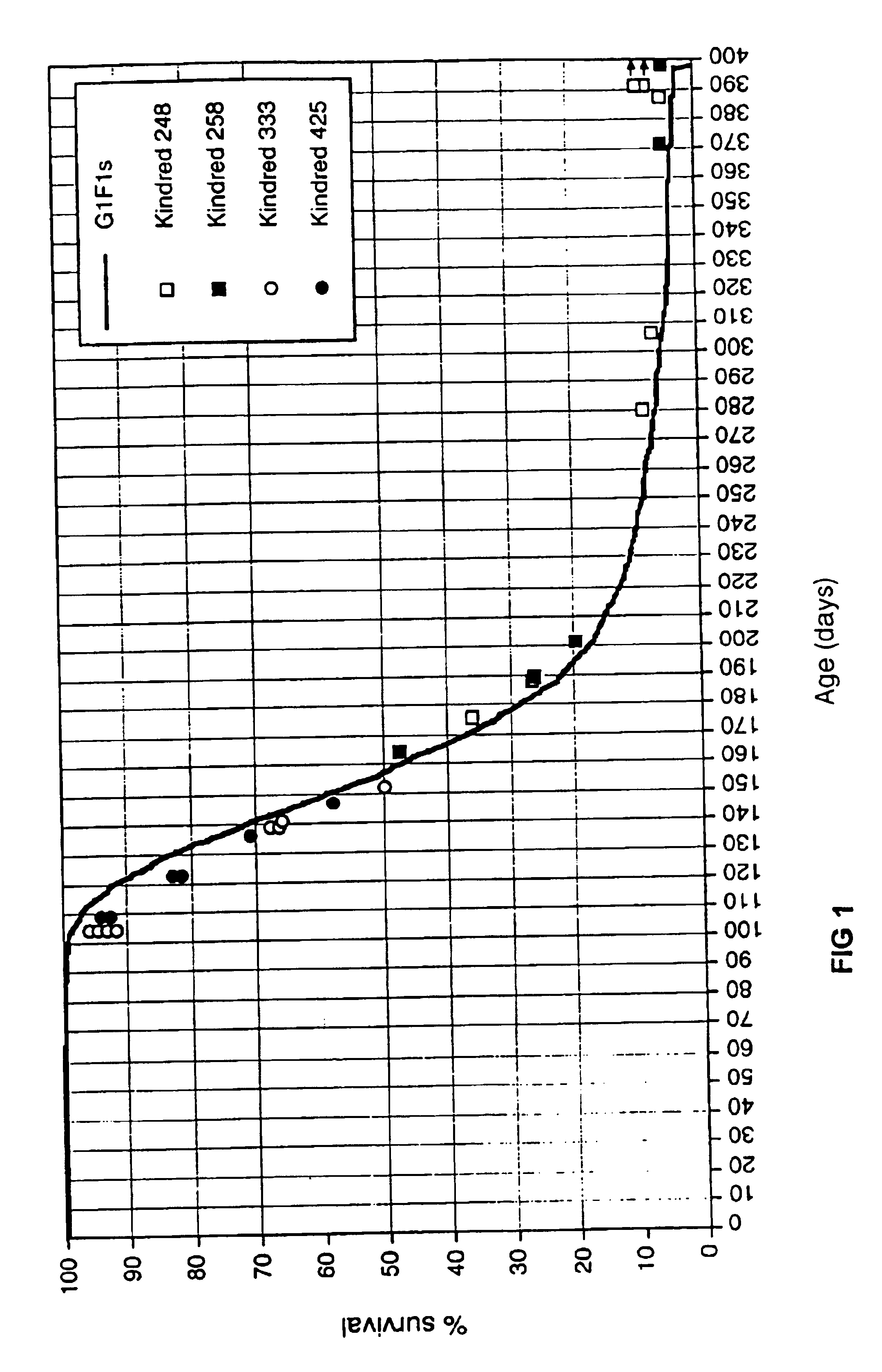Method for identifying mutants and molecules
a mutant and molecule technology, applied in the field of identifying mutants and molecules, can solve the problems of limited understanding of oncogenesis, and development of pharmaceuticals that modify, and little insight into the functional relationship between genes
- Summary
- Abstract
- Description
- Claims
- Application Information
AI Technical Summary
Benefits of technology
Problems solved by technology
Method used
Image
Examples
example
[0052]The Min mutation, described by Moser et al., “A Dominant Mutation that Predisposes to Multiple Intestinal Neoplasia in the Mouse,”Science 247:322-324 (1990), incorporated herein by reference, is a dominantly transmitted, fully penetrant mouse mutation that causes a phenotype in heterozygotes that closely resembles human inherited colonic polyposis syndromes. In this example, C57BL / 6 mice carrying the Min allele were bred with genetically-distinguishable BTBR mice that carried random point mutations inherited from mutagenized fathers.
[0053]At approximately 1 month intervals, 6 to 12 male BTBR mice were treated with ENU according to the protocol described by Shedlovsky, supra, and were then crossed to female, unmutagenized BTBR mice. The Gen1 offspring of that cross were isogenic BTBR animals heterozygous for possible mutations that could affect the tumor load in mice that contain the Min mutation. Approximately 900 female Gen1 offspring were obtained over time.
[0054]Two hundred...
PUM
| Property | Measurement | Unit |
|---|---|---|
| Capacitance | aaaaa | aaaaa |
| Time | aaaaa | aaaaa |
| Strain point | aaaaa | aaaaa |
Abstract
Description
Claims
Application Information
 Login to View More
Login to View More - R&D
- Intellectual Property
- Life Sciences
- Materials
- Tech Scout
- Unparalleled Data Quality
- Higher Quality Content
- 60% Fewer Hallucinations
Browse by: Latest US Patents, China's latest patents, Technical Efficacy Thesaurus, Application Domain, Technology Topic, Popular Technical Reports.
© 2025 PatSnap. All rights reserved.Legal|Privacy policy|Modern Slavery Act Transparency Statement|Sitemap|About US| Contact US: help@patsnap.com

